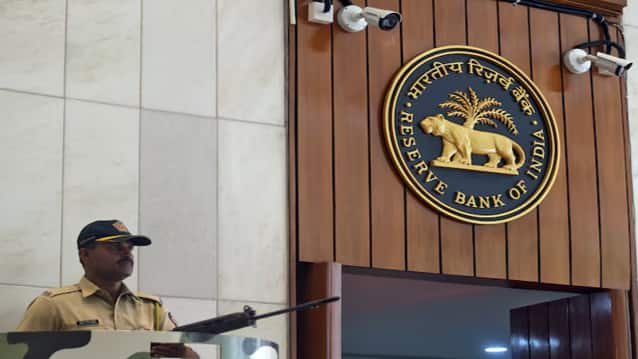The RBI's liquidity infusions and its commitment to maintain significant liquidity surpluses have significantly eased funding conditions for banks, which is reflected in increased system liquidity and falling deposit costs, said Fitch Ratings.

As of early July 2025, net liquidity surplus in the banking system stood at approximately Rs 3.3–3.74 trillion, as per the RBI data. (Source: reuters)
Increased system liquidity and falling deposit costs following the Reserve Bank of India’s (RBI) liquidity infusion in Indian banks should enable transmission of a 100 basis points rate cut in 2025, Fitch Ratings said on Wednesday.
The central bank’s liquidity infusions and its commitment to maintain significant liquidity surpluses in the banking system have significantly eased funding conditions for Indian banks, which is reflected in increased system liquidity and falling deposit costs.
The Reserve Bank of India has injected Rs 9.5 lakh crore of durable liquidity into the banking system since January this year through different measures, including CRR cuts, open market operations, buy-sell swaps, and more that moved system liquidity from deficit to surplus in March 2025.
Also read: SEBI Launches VCF Settlement Scheme 2025 for Funds with Overdue Liquidations
As of early July 2025, net liquidity surplus in the banking system stood at approximately Rs 3.3–3.74 trillion, as per the RBI data.
Moreover, the deposit costs have dropped by 30–70 basis points since February 2025, following a 100 bps cumulative cut in the RBI’s repo rate. Major banks like SBI have reduced fixed deposit (FD) rates by 25 bps and slashed savings account rates to 2.5 per cent.
Since January 2025, the central bank has implemented a total of 100 bps cut in repo rate cuts -- 25 bps cut in February followed by another 25 bps cut in April, and 50 bps cut in June, reducing the repo rate from 6.25 per cent to 5.50 per cent.
Fitch noted that the RBI’s liquidity injections mark a shift in its policy stance towards spurring loan growth.
Also read: RBI Warns of Near-Term Stress for Banks Amid Slowing Credit, Likely Margin Pressures
"Banks’ margins to fall in the near term as a significant share of loans will be immediately repriced downwards, but margin pressures should ease as deposit costs also fall meaningfully by the financial year ending March 2027,” it said.
RBI also, in its latest financial stability report, had noted that India’s banking sector, while having delivered robust performance over the past three years, may face mounting near-term pressures. With an increasing share of loan books now linked to the external benchmark-based lending rate (EBLR)—which is adjusted more frequently in line with repo rate movements—a softening rate cycle could compress NIMs.
Empower your business. Get practical tips, market insights, and growth strategies delivered to your inbox
By continuing you agree to our Privacy Policy & Terms & Conditions
